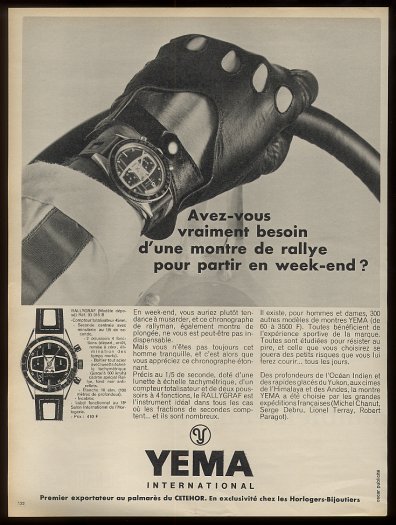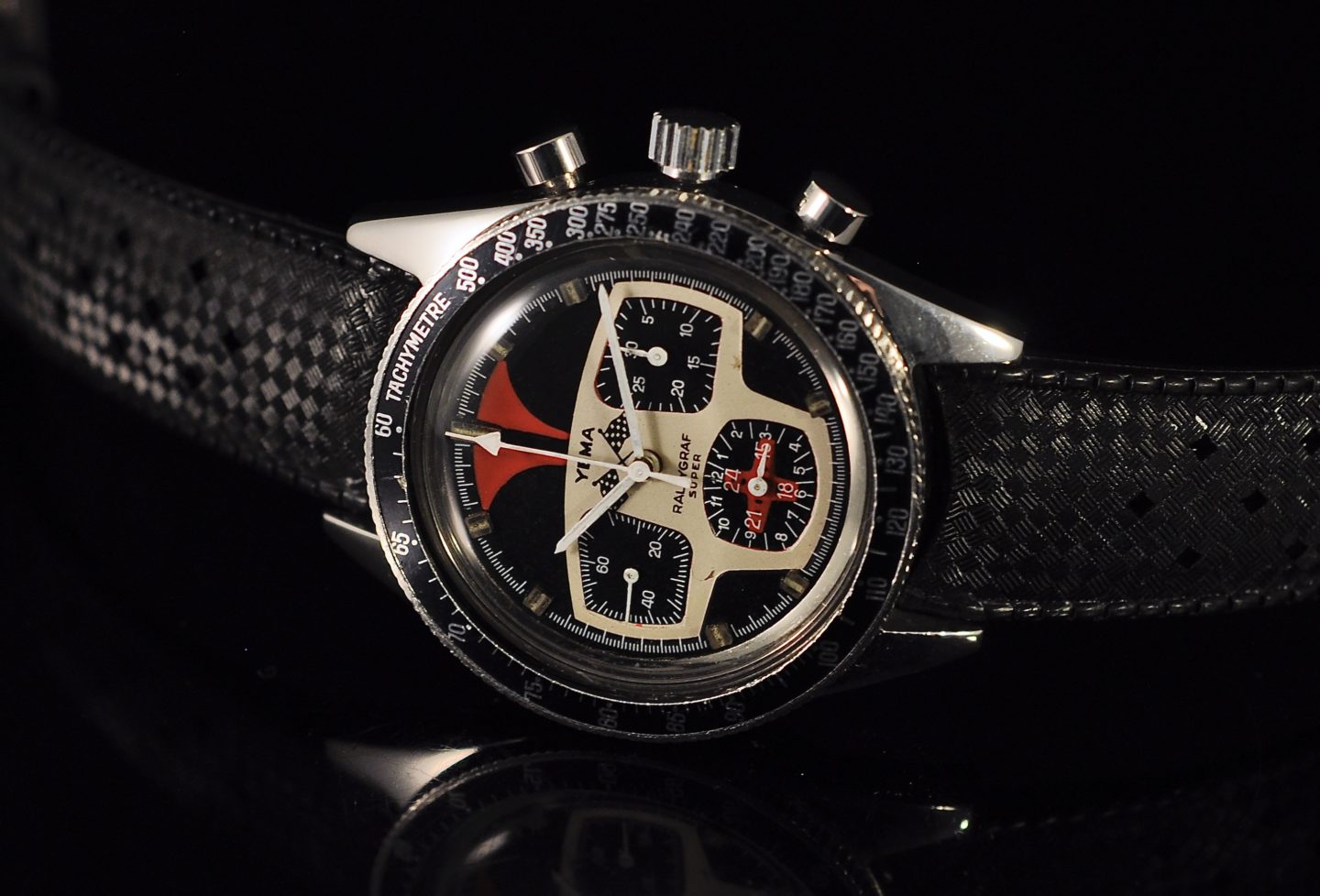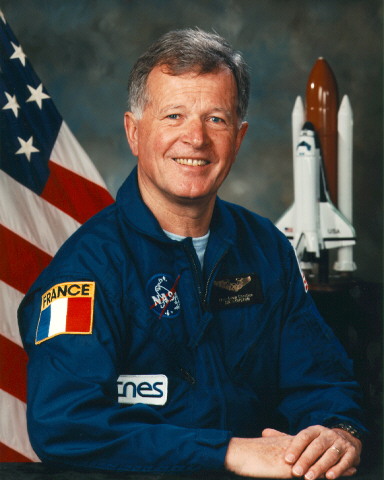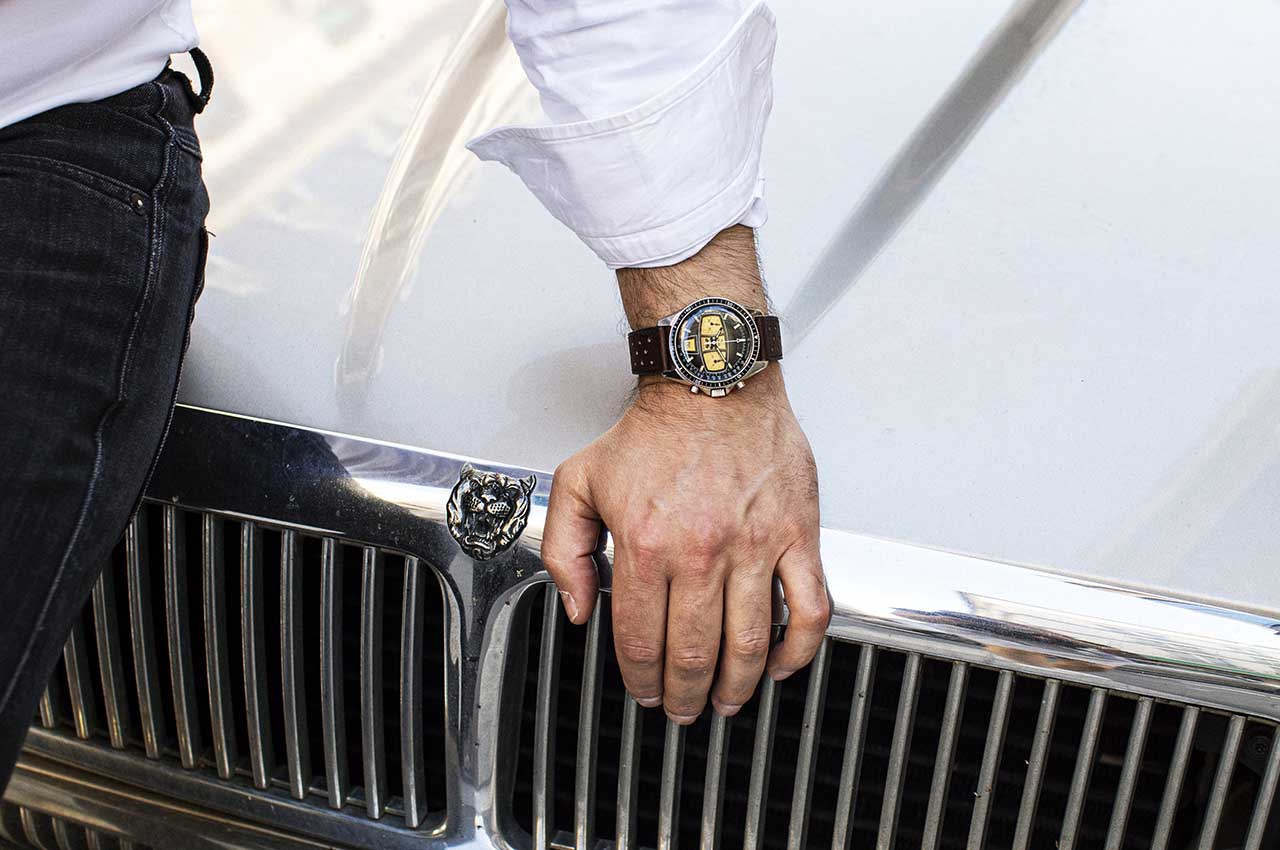Little History of YEMA
Watchmaking, the French way

Henry Louis Belmont founded YEMA in 1948, in Besançon, in the Doubs, the cradle of French watchmaking. According to legend, the name, which sounds Greek, was born from the imagination of a teenager during a competition organised by the founder himself. The manufacture quickly enjoyed great success on the international scene, since in 1966, and for three consecutive years, Yema was the leading French watch exporter, with more than 500,000 models delivered to more than 50 countries. In the United States, it was under the name “LEJOUR”, an export brand, that Yema established itself on the wristwatch market. Today, its workshops are located in Morteau in Franche Comté.
Yema’s story is a story of technical advances. The brand’s models are both markers of the history of watchmaking and also of human adventure, as they follow all the exploits of the second half of the 20th century. Indeed, these watches are intended for professionals: diving watches, pilot’s watches, astronaut’s watches, car racers’ watches. The key words of the brand are reliability and robustness.

Yema Rallygraf – Circa 1970 
Yema Rallygraf “Brown Sugar” – Circa 1970
The conquest of the seas
In 1963, the Superman was born. The watch is reputed to be “unbreakable” with an automatic movement (ETA 2452 calibre) and offers a water resistance of 300m and a steel “bezel block”. An icon! Especially since it equipped the “PLOUFS” (helicopter rescue divers) of the French Air Force. Always at the service of diving professionals, in 1966, Yema produced the Yachtingraf: a chronograph with a Valjoux 92 mechanical movement, water-resistant to 200 m, indicating the regatta time.
This model was chosen at the beginning of 1970, by the French Sailing Yachting Federation, as supplier of the French Sailing Team for the next four years. The French team therefore went to the 1972 Olympic Games with a yatchingraf on its wrist.
The conquest of the circuits
In the same year, in the golden age of motor sport competitions, the Rallygraf was released. This is the model worn by the driver Mario Andretti, a true legend in the history of racing. He won 111 victories, including the Daytona 500, the Indianapolis 500 and finally the Formula 1 World Championship.

Yema 1st exporter of CETEHOR 
Yema Rallygraf Super – Circa 1970 
Mario Andretti
The conquest of the skies
In 1978, the company set out to conquer the skies by producing its “patent pending” Flygraf. This is a chronograph with an automatic movement equipped with an ETA 7750 and is above all a tool for specialists. For example, its logarithmic bezel allowed pilots to make various calculations concerning altitude, speed, distances or fuel consumption.
New challenge in the 1980’s: Yema launches into the realisation of the Spationaute 1 which left on June 24, 1982, on the wrist of the French astronaut, Jean-Loup Chrétien, for a 10-day trip into space.

French excellence
Finally, in May 1986, the North Pole was developed to accompany Jean-Louis Etienne as he set off on the road to the North Pole. An odyssey of more than 800km where he wore this titanium watch, designed with a system avoiding magnetic north and the four cardinal points.
2017, back into space. Yema in collaboration with CNES (National Center for Space Studies) is developing a model in honour of the Proxima mission. This proves that the excellence of French watchmaking still survives. And these professional watches are legitimate since some of the greatest contemporary explorers are ambassadors for the brand: the pilot Pierre Sancinena, the photographer David Templier, and the navigator Michel Desjoyeaux.
